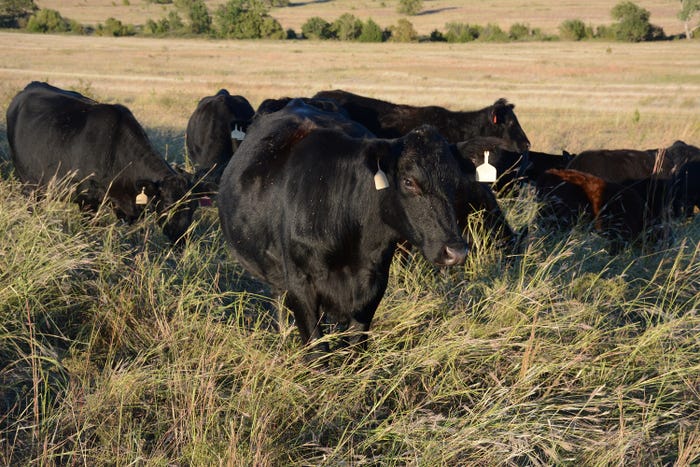
At the first frosts in early October, author calculated he had ample warm-season grass to get through the winter.Debi Newport
At frost last year in late October, I calculated I had enough forage under the very worst of conditions to make it through to at least April 15.
This estimate was done based on acres used per day and acres left to graze, plus some extra days for bale grazing and potentially some possible days for grazing in the hay meadow, if needed.
As it turned out, on May 7 I still had about a month of nice, mixed forage with plenty of new and some old forage (see video). For those of you who don't live in native-grass country, this leftover forage is really important to get through the spring until ample forage appears in late spring.
There are fundamentally two reasons I had so much more forage than I planned. First was the fact I moved into forage that was much better -- more copious and better quality -- than what I grazed during the growing season. Second, as the forage quality declined in late summer and early fall I had slackened up on my grazing pressure and consumption in an effort to improve quality and aid body condition on the custom cows. This resulted in significantly less animal days per acre in my calculations.
Once the frost killed the forage, I switched to much higher consumption levels, more severe grazing, and the use of supplemental protein to maintain body condition. A decision with the owner of the cattle to let the cows, which calved in late summer through the fall, slowly lose some condition and then rebreed in summer let us cut into what would otherwise have been a costly protein bill. To a lesser degree, some fescue and other cool-season grasses in the understory of the mature warm-season forage helped with protein content for the cows.
Just as important as cow condition is the way the cows and I were preparing the ground for growth this spring and summer. We consumed and tampled the vast majority of the standing forage, leaving the soil fertilized with urine and dung and ready for spring growth.
I had purchased some native-grass hay from a neighbor and used it in mid winter for bale grazing purchased, pregnant heifers. This offered me a higher stocking rate, plus the potential to add fertility and a seed source to some of the poorest land on the farm, and help in transitioning from custom-grazed cows to owned cattle.
Most of the winter we grazed at stock densities of 60,000-150,000 pounds per acre. Because much of the grazing was done in strips away from water, I could adjust stock density up or down a little bit from day to day to consume or leave more forage behind the cows and calves. If I gave too much forage one day, we could cut back a little the next and expect them to eat more of the unconsumed dry matter.
In a very wet winter we left behind a lot of hoof prints and some areas that were truly pugged. The oldest areas now are turning beautifully green with new forage.
About the Author(s)
You May Also Like




